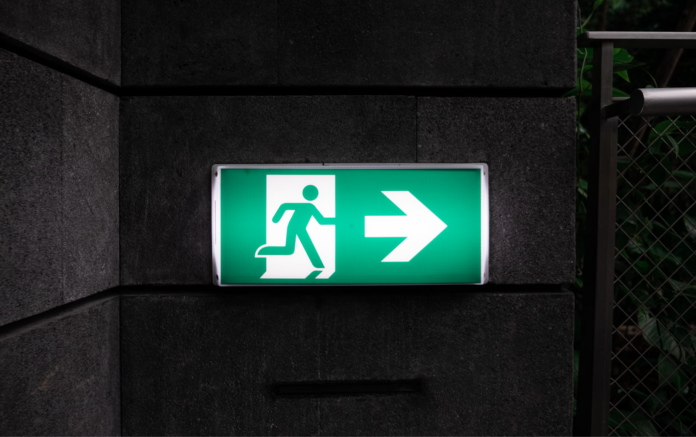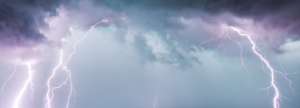Emergency signage is a type of digital signage content you should always have at the ready, but hope to never have to use. As its name suggests, this type of content only comes up in emergency situations with its main purpose being to bring the viewer to safety. Depending on the nature of the emergency situation, instructions may vary. Thankfully, digital signage is extremely versatile and can adapt to each and every situation. In this article, we’ll lay out guidelines for different types of emergencies to prepare for. Assess how likely any of these categories and emergencies are to happen in your business or surroundings.
Is there a need for emergency digital signage?
For smaller businesses with very limited foot traffic at once, emergency messaging might not be as required as if there are regularly dozens or hundreds of people within or around the establishment. Nonetheless, even for only a few visitors at a time, clear instructions in an emergency situation can save valuable time. For the purpose of clarity, let’s section up emergencies based on their reach, ranging from large emergencies, such as natural disasters, to contained tense situations, such as dense crowds. Determine which of these are likely to happen in your surroundings, then construct appropriate signage to inform and direct your target audience to take the best course of action.
Large-scale emergencies
These emergencies affect everyone within a wide area. Their origin is not important, only the fact that they may affect an entire building, neighborhood, or city. Large-scale emergencies include natural disasters such as earthquakes, hurricanes, tornadoes, fires, floods, structural damage, etc.
Depending on the context, emergency digital signage instructions will vary. In some instances, you’ll want to advise people to evacuate as quickly as possible and seek safety elsewhere. In others, it’s better to advise the exact opposite and suggest that people remain where they are until the emergency passes. Assess which disasters have any chance of happening in your area. Based on what is needed, design content for digital displays to give clear instructions as well as paths to the nearest exit and evacuation routes.
Local emergencies
These emergencies happen on a smaller scale, but are still large enough to affect multiple businesses and many people at once. They may affect people within an establishment or even surrounding businesses. These can include local flooding, gas leaks, power outages, chemical spills, or local fires. They may also include bomb or shooter threats. For these types of emergencies, have evacuation or shelter in place info prepared as these are the most common instructions needed.
Localized and specific emergencies
Localized emergencies happen on a smaller scale but still pose relative danger. These may happen within a single establishment. Localized emergencies are typically not too serious for a crowd of people, but may provoke a sense of panic if unaddressed. Local emergencies include power outages, water leaks, individual health alerts, etc. No matter how small an emergency may appear, clear messaging is very useful for any context that might evoke a sense of panic in a crowd. Power outages, for instance, are not a big deal. Lights go out, and emergency lighting kicks in. But they quickly cause unease. People wonder what caused the outage, potentially leading to a sense of panic.
Panic is problematic for the fact that it creates an emergency even when none is present. If someone feels sick and needs urgent medical attention in big crowds, it may lead to panic or uncertainty. People might rush to see what’s happening, or think something wide-spread is at hand. Speculations fly very quickly. All it takes is for one person to voice a thought about a virus, a shooting, or a fire, to set off a wave of panic, leading to unpredictable consequences.
Digital signage messaging can instruct people to stay head to the nearest exits to be safe. Or when there is no wide-spread danger, inform people that there is nothing to worry about, informing them on the actual situation.
Preventive emergency digital signage
Consider instances where no emergency is taking place, but there is a chance of one forming. An abnormal spike in traffic, for instance, increases the chances of accidents. Crowds are common in public transportation. But if a train is delayed, or a bottleneck forms, advise people to be patient, or to consider an alternative route. Also think about any upcoming dangerous weather alerts, high or low temperatures, etc. In these cases, display the upcoming conditions and advise people to take appropriate action. The messaging doesn’t need to be intense or flashy, but rather come in as a note for public safety.
If you find there is even the slightest chance of any of these emergencies occurring, it is better to be prepared and hope to never have the need for them, than to be caught unprepared and off guard.
Best practices for emergency digital signage
Use consistent colors, fonts, and symbols for your emergency messaging to ensure instant recognition. Red and yellow content typically implies an emergency. For smaller emergencies where you’re simply providing guidelines, use calmer tones. Be mindful, however, that if your emergency messaging is unclear, it may only induce a further sense of panic. Make the content simple, easy to read, and short. If the emergency necessitates that people stay inside, say it in simple words. For instance “Tornado threat: Stay indoors!”
When designing content, be mindful of display locations. This is critical for content pointing the viewer to the nearest exit or a safety point.
Make sure staff can easily trigger emergency digital signage campaigns. Digital signage software offers simple ways to deploy such campaigns quickly. For instance, with OnSign TV, you can set up QR-codes which will deploy emergency content on all displays once the code is scanned. If you wish, you can make this available for everyone, including customers, who can initiate an emergency broadcast if they feel there is a real emergency taking place.
Cover image by Andrew Teoh.







